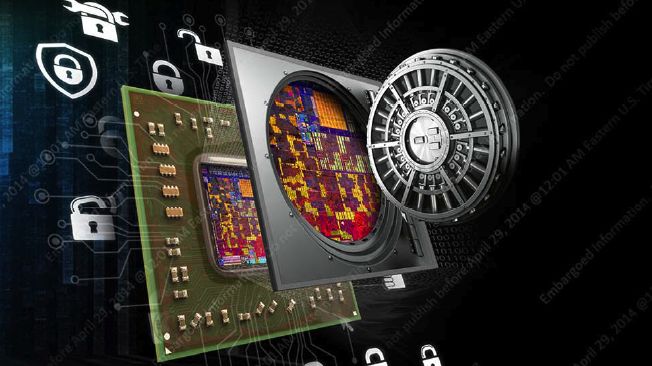AMD Mullins and Beema APUs are here to conquer mobile processing
Should Intel be worried?

We reported at the end of last year that 2014 would be the year of the APU for AMD, and today the chipmaker is delivering on that premonition.
Mullins and Beema, announced during APU13 in November, are henceforth known as 2014 AMD Low-Power and Mainstream APUs. They mark the company's third-generation accelerated processing units, following Brazos, Kabini and Temash.
Stocked with up to four Puma+ x86 CPU cores, GCN-towing Radeon R Series graphics and DDR3-1866 memory, the new APUs are destined for consumer and commercial mobile devices, including fanless tablets, 2-in-1s and small-screen and ultra-thin laptops. Beema is headed to mainstream notebooks, while AMD has Mullins in mind for passively cooled systems.
AMD is looking to double down on performance-per-watt, and that theme runs through the new processing units. Compared to Kabini's 2.0Ghz, Beema runs in at 2.4GHz, and Temash's 1.4GHz is shamed by Mullins' 2.2Ghz.
Lenovo and Samsung have already out some Beem and Mullins products, and many more are expected on shelves by the time the back-to-school buying rush begins.
More goodies
The chips mark the first use of AMD's platform security processor (PSP), which is based on the ARM Cortex-A5. The processor-in-a-processor utilizes ARM TrustZone technology, dividing data into two "virtual CPUs" - a "secure world" and "normal world" - depending on what kind of info is being processed.
Types of data that would live in the secure world are online payment information and enterprise- and web-based services.
Are you a pro? Subscribe to our newsletter
Sign up to the TechRadar Pro newsletter to get all the top news, opinion, features and guidance your business needs to succeed!
AMD's 2014 line-up has some heady figures attached to it; Beema is touted as having up to 100% better graphics performance than Kabini, while also walking around with a power-suck reduction of up to 20%.
When stacked against the competition, the 15W APU is quoted as having 50% better graphics performance and up to seven times the compute power as Intel's Haswell U.
As for Mullins, the APU is said to have 2x the graphics performance-per-watt and almost 2x the productivity performance-per-watt than Temash. Compared to the Intel Core i3, Mullins is simply said to have "better graphics performance," and compared to Atom, the AMD chip has 3x the compute performance.
One last bite at the last generation; Mullins' top-end processor is said to have over 50% more frequency at almost half the TDP as the APU before it.
As for the frills, users will find AMD's Gesture Control for touch-free app control, Face Login, Quick Stream Technology, Perfect Picture and Steady Video tech all built-in.
Thanks to the company's Android-on-Windows BlueStacks solution, users can have a full-Android experience while on their Microsoft-powered PC.
Look for Beema in E1-6010, E2-6110, A4-6210 and A6-6310 configurations and Mullins in E1 Micro-6200T, A4 Micro-6400T and A10 Micro-6700T configs.
Michelle was previously a news editor at TechRadar, leading consumer tech news and reviews. Michelle is now a Content Strategist at Facebook. A versatile, highly effective content writer and skilled editor with a keen eye for detail, Michelle is a collaborative problem solver and covered everything from smartwatches and microprocessors to VR and self-driving cars.
